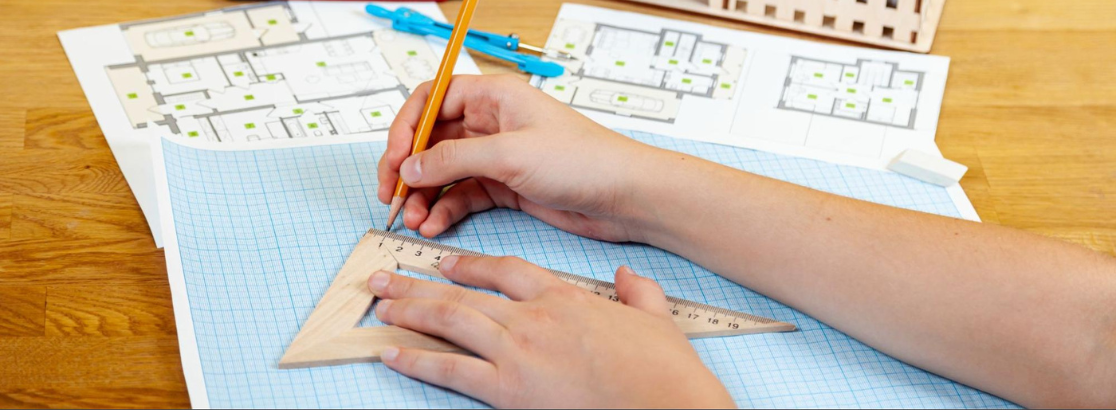Vastu Shastra traces its roots back to the Vedic period; it began around 1500 to 1000 BCE when it was part of the sacred scriptures like the Atharva Veda. The principles of Vastu were formulated based on the belief that the universe is made of five elements: earth, water, fire, air and space, and that harmonising them in a space will enhance the inhabitants’ lives.
Today, texts like the Mayamata codified these principles, linking them to cosmology, astrology and temple architecture. Modern interpretations of Vastu Shastra often adapt them to help buyers find a vastu-compliant home.
Vastu principles have shaped architectural practices all over India. We can see Vastu compliance in various historical buildings in the country: from temples of South India to forts and palaces in Northern states. Vastu today remains an essential part of home construction, representing how spiritual beliefs have blended with practical designs today, like in Raymond Realty’s Ten X ERA – Thane.
Scientific Perspectives on Vastu
Correlation with Modern Architecture:
Many Vastu principles align with contemporary architecture’s focus on functionality and sustainability.
For Example:
- Orientation and Sunlight: Vastu emphasizes placing windows and main entrances to maximise sunlight, just like modern passive solar design.
- Ventilation: The guidelines for air circulation are similar to modern HVAC systems’ goals to ensure airflow for comfort and health.
- Space Utilisation: Vastu focuses on symmetry and proportions that reflect today’s ergonomic design principles.
Case Studies:
Many case studies conducted in commercial workspaces that adhered to Vastu principles indicate employee satisfaction and productivity, which were attributed to better light and spatial arrangements.
Another case study found that homes that followed Vastu principles contributed to a sense of peace and order, though the scientific studies on the same remain limited.
Vastu for Urban Living
Adapting Vastu in Apartments:
For Vastu-compliant home designs in high-rise buildings, you need to adopt creative modifications, as there is often limited flexibility. Guidelines include:
- Positioning the main entrance in auspicious directions, such as north or east.
- Ensuring that the kitchen and bathrooms are aligned with Vastu zones, even in compact layouts.
- By using mirrors and lights, you can compensate for deviations in direction and enhance the flow of energy.
Space Constraint Solutions:
- Multi-functional Furniture: By using foldable and modular furniture, you can optimise the space and still adhere to Vastu symmetry.
- Decorative Adjustments: Incorporating Vastu symbols like plants or fountains to correct minor directional imbalances.
- Colour Psychology: Choosing colours like light blue, green and yellow will help improve spatial harmony.
Technological Tools for Vastu Compliance
Online Vastu Assessment Tools:
Today, you can even check the Vastu of a house online. Many tools allow users to upload floor plans and get recommendations based on traditional guidelines. Here are some tools you can use:
- Vaastuyogam: This is a comprehensive tool for floor plan analysis.
- MyVaastu: Provides detailed feedback on space alignment and corrections.
- VastuApp: Simplifies compliance checks for small apartments and offices.
Vastu in Sustainable and Eco-Friendly Designs
Integration with Green Building Practices:
Vastu principles call for natural light, ventilation and organic materials that align with green building standards like LEED. So, for example:
- By orienting a home to optimise sunlight, you reduce the need for artificial lighting.
- The placement of water bodies also aligns with rainwater harvesting systems.
Energy Efficiency:
- Natural Ventilation: Vastu-compliant home plans also emphasise airflow to reduce reliance on air conditioning.
- Thermal Comfort: There are guidelines for wall thickness and materials that help in naturally maintaining indoor temperatures.
Common Misconceptions and Myths about Vastu Shastra
Debunking Myths:
- Rigid compliance: This is a common myth. People often believe that a non–Vastu-compliant home design can lead to misfortune. However, minor deviations can be fixed using practical remedies.
- Universal Rules: Vastu guidelines are often generalised, but they also must be tailored to specific climates and geographies.
Practicality v/s Superstition:
Often, Vastu Shastra is dismissed as a superstition due to exaggerated claims. However, with practical applications, such as enhancing light, air and energy flow, you can improve functionality and well-being, enhancing the use of Vastu-compliance homes.
Often, when a real estate and Vastu expert recommends that you buy a home with an east-facing bedroom for the natural morning light, then it’s more for your health, rather than just simply a superstition.
Vastu for Commercial Spaces
Office Layouts:
Designing a Vastu-compliant workplace improves productivity, creativity and positivity. Key guidelines include:
- Entrance: Ensure that the office entrance faces the north, northeast or east. These are generally considered auspicious directions that encourage positive energy flow.
- Seating Arrangements:
- Executives and managers should occupy rooms facing the southwest, as they help in promoting stability and authority.
- Employees should also sit facing north or east, as these directions encourage focus and positivity.
- Desk Placement: It is important to be Vastu compliant, meaning that in an office, it is ideal to avoid placing the desks directly under beams. This placement is believed to cause stress and imbalance.
- Pantry and Restrooms: Keep the pantry in the southeast and restrooms in the northwest, or west corners, as it will align with the energy zones.
Retail Spaces:
Vastu principles will improve foot traffic, enhance customer satisfaction, and boost sales in your shop or mall.
- Shop Entrance: Place the main entrance in the north, east or northeast to attract prosperity.
- Cash Counter: Position it to face north, and always keep it clean and organised to symbolise consistent financial growth.
- Product Displays: Use well-lit spaces in the northwest and southeast corners for product displays to attract customer attention.
- Storage Areas: Keep the storage area in the southwest to ensure the stability and security of inventory.
Personalised Vastu Consultations
Expert Insights:
Anecdotes from Vastu experts have highlighted the importance of having customised solutions, such as a Vastu-compliant home plan. Take, for example, Mr B. V Raman, a renowned pioneer in Vedic sciences, who emphasised aligning Vastu principles with local geography. Many experts today have also stressed the importance of balancing between traditional principles and modern practicality, thus advocating for flexible approaches.
Customisation:
Tailoring Vastu to individual lifestyles requires you to follow these steps:
- Family Needs: Adjusting layouts that will suit the family size and lifestyle, such as creating study areas for children in the northeast.
- Health and Occupation: Customising zones for healing or creativity based on the residents’ professions.
- Remedies: Non-invasive corrections, like mirror placements, plants or specific colours will enhance and balance the energy appropriately.
Global Influence of Vastu Shastra
International Adaptations:
Vastu has been accepted as a science worldwide and is widely used in the design of homes, offices and public spaces. For example:
- United States: Architects integrate Vastu into high-end residential and commercial projects to cater to Indian clients.
- Australia: Builders are increasingly offering Vastu-compliant homes to meet the growing demand for these houses.
- Europe: Vastu principles have been combined with modern minimalist designs to promote harmony and sustainability.
There are many traditions similar to Vastu Shastra around the world:
- Feng Shui: Just like Vastu, Feng Shui is a Chinese concept that focuses on energy flow, also known as ‘Chi’. It is also different from Vastu, which promotes fixed directional alignments, while Feng Shui emphasizes fluidity and placement.
- Geomancy: European Geomancy shares a lot of common aspects with Vastu, such as the use of natural elements to influence spatial energy.
Future Trends in Vastu-Compliant Architecture
Innovations:
Vastu today has been integrated with smart home technology and green building practices. Trends include:
- Smart Vastu Apps: These applications provide real-time analysis and recommendations to ensure Vastu compliance during the design phase.
- AI-Powered Tools: Artificial intelligence that predicts and optimises energy flow based on Vastu principles.
- Sustainability: Combining Vastu with eco-friendly materials and renewable energy solutions.
Educational Pathways:
- Courses: Institutes in India and abroad offer certifications in Vastu Shastra, such as the Institute of Vedic Astrology.
- Workshops: Short-term workshops often focus on specific aspects like residential or commercial vastu.
- Advanced Studies: Integrating Vastu with architecture through master’s programs in universities.
FAQs
- What does Vastu compliance mean in a home?
Vastu compliance ensures that a home’s layout aligns with the natural elements and energy zones, promoting health, harmony and prosperity. This includes the correct orientation of entrances, rooms and utilities.
- How can I check if my house is Vastu compliant?
You can do this in three ways:
– Use visual assessment to evaluate the placement of entrances, rooms and furniture based on directional guidelines.
– Online Tools: Some websites and apps offer quick assessments.
– Professional Help: Hire a Vastu consultant for a detailed analysis and personalised suggestions.
- Is Vastu applicable to rented properties?
Yes. Tenants can implement Vastu without making any structural changes by placing furniture and decor according to Vastu principles, using plants and colours to correct imbalances and ensuring cleanliness in key areas like entrances and kitchens.
- What are common Vastu mistakes to avoid?
Avoid clutter or obstructions near the main door, and ensure that the bathrooms are not located in the northeast or centre of the house. Avoid keeping sofas, chairs or beds under exposed beams and use mirrors and colours to reduce the risk of misalignments.


 By Raymond Realty
By Raymond Realty  February 4, 2025
February 4, 2025  Blog
Blog
